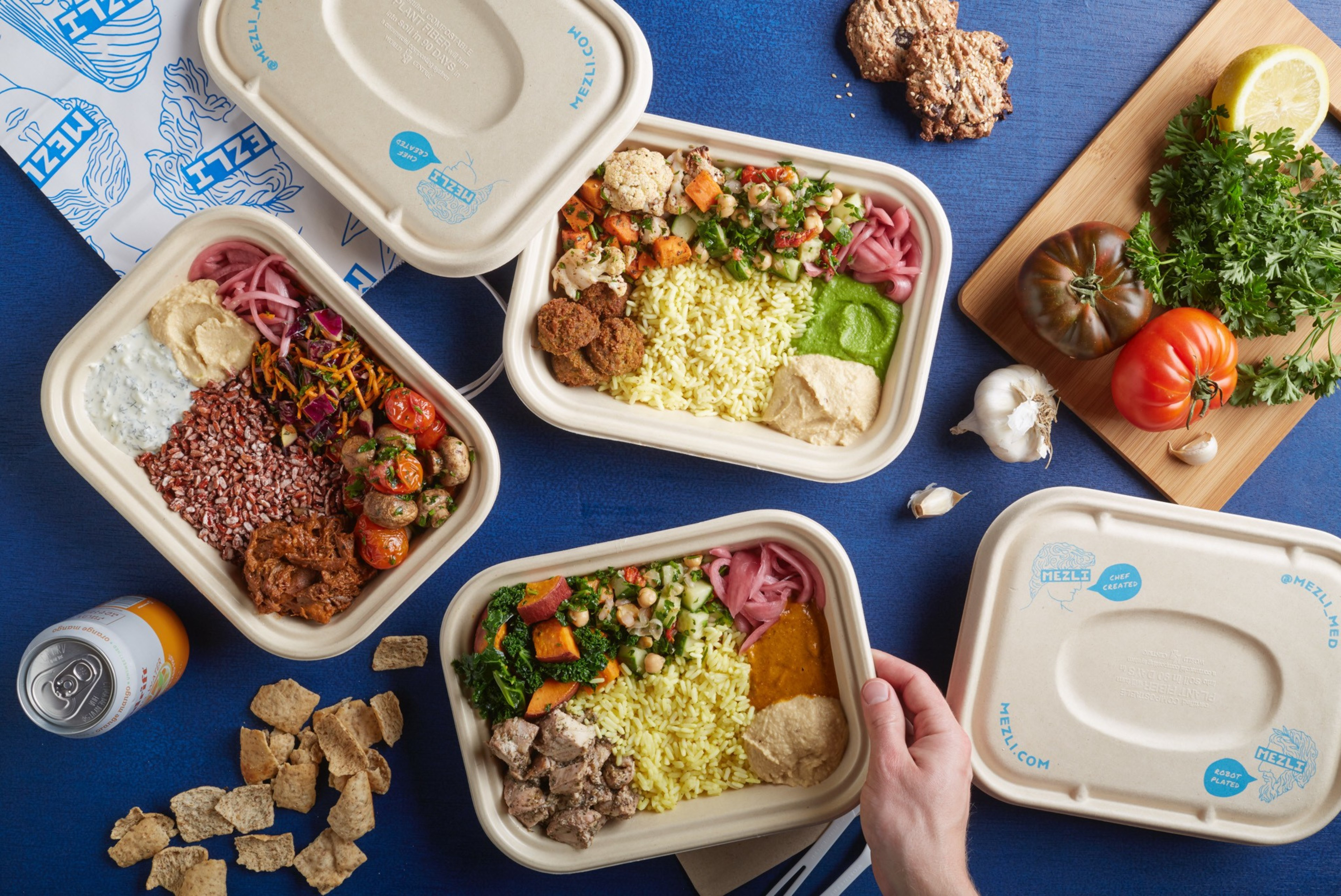The long road toward automated food service is paved with robotic husks.
There was Eatsa, which opened two automated quinoa bowl locations in downtown San Francisco that closed owing thousands (opens in new tab) in unpaid rent. There was Zume, the robotic pizza company that raised hundreds of millions from investors before abruptly pivoting (opens in new tab) to food packaging. And who could forget Cafe X, which featured dancing robot arms (opens in new tab) that made lattes. They, too, eventually waved goodbye to customers.
But that was then. More than two years into a pandemic that has perhaps irrevocably changed the restaurant industry, another entrant has entered the ring.
Mezli, which bills itself as the world’s first fully automated restaurant, offers tasty robot-assembled Mediterranean grain bowls at a lower price point than competitors.


The company’s first official location, in the SPARK Social outdoor food court in Mission Bay, looks a bit like a shipping container designed by someone with Mykonos on their vision board. Splashed with Mediterranean blue, Mezli’s box features a number of large touch screens that take customers’ orders before the internal machinery whirs into action to assemble and heat the dish and spit it out the other end. At peak performance, the company says it can do 500 meals a day.
Mezli CEO Alex Kolchinski said he and his two co-founders came up with the idea while they were graduate students at Stanford University. Without a lot of time to cook—and a wealth of engineering expertise—they figured they could use automation to bring down costs and offer high-quality food at a lower price point.
So why now? Kolchinski pointed to the tremendous labor shortage in the restaurant industry that has led many businesses to cut hours.
Those labor issues—a persistent problem even prior to the pandemic—have grown even more dire. According to data from the Bureau of Labor Statistics, workers in the leisure and hospitality category, which includes food service workers, among the highest quit rates along with total employees quitting their jobs.
In June, for every 100 people in accommodation and food services in San Francisco, nearly six quit their jobs.
“If you can automate the food service aspect to it, you can actually take the people who do want to work in food service and have them serve effectively a lot more customers,” Kolchinski said.


He added that the company has learned from the mistakes of its predecessors. Keeping the automation process simple and emphasizing reliability through special purpose robotics was one lesson.
“Putting something into a bowl once is pretty straightforward; you can do it as a college engineering project,” Kolchinski said. “But doing it 500 times? That’s the hard part.”
The other learning was a laser focus on the food itself. To that end, Mezli enlisted Eric Minnich, a longtime Bay Area fine dining chef, to be their culinary sherpa.
Minnich, who worked at Michelin-starred restaurants, found himself without a job when his Presidio restaurant The Commissary shut down during the pandemic. He linked up with the Mezli team and was impressed by their focus on the food that their machine was producing.
“I said to myself, okay, automation is coming, right? It’s on its way. Do I want to live in a world where automated restaurants are dictated by McDonald’s and Wendy’s and Taco Bell and Pizza Hut? Or do I want to try and help maybe steer this ship in a better direction?” Minnich said.
Menu development poses a unique challenge as Minnich and his team have to rethink processes and ingredients to fit in with the company’s engineering.
Kolchinski acknowledges that some may quibble with his definition of a fully automated restaurant, given that much of the food is prepared beforehand by a small team in a commercial kitchen before being delivered to the site. A person also has to reload the ingredients and clean the internal machinery.
And some small technical glitches are still being worked out. One of the trays where food is served, for example, had to be reset manually after retrieving the item inside during a recent visit.
But this is just the beginning, the company says. The first version of the technology was on a picnic table; the second was literally made from a shipping container. The eventual goal is to mass produce the machines, driving costs down and widening availability to the general public.
“I see the company continuing to grow by putting food first and putting the customer experience forward, and just serving good food at a good price,” Minnich said. “That’s what our main mission is, scaling that as much as we can, responsibly.”